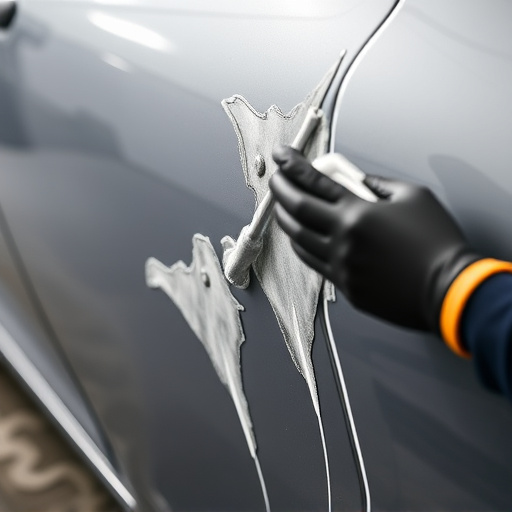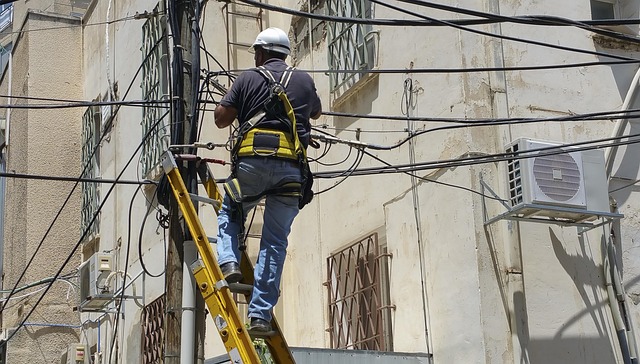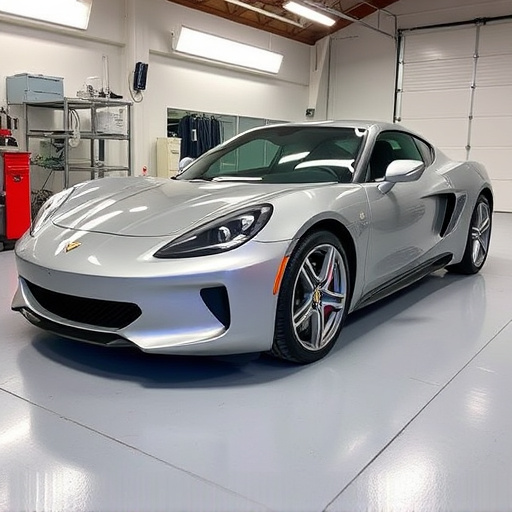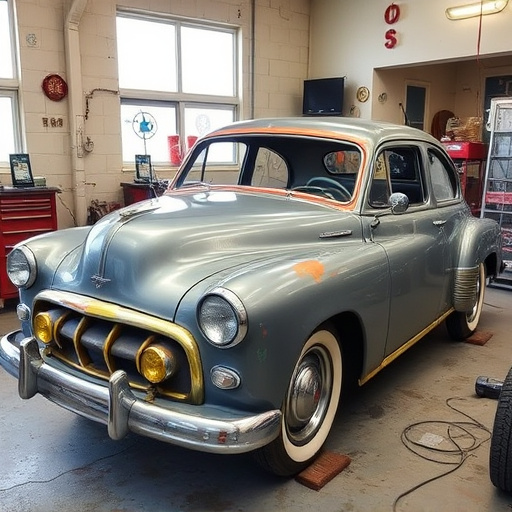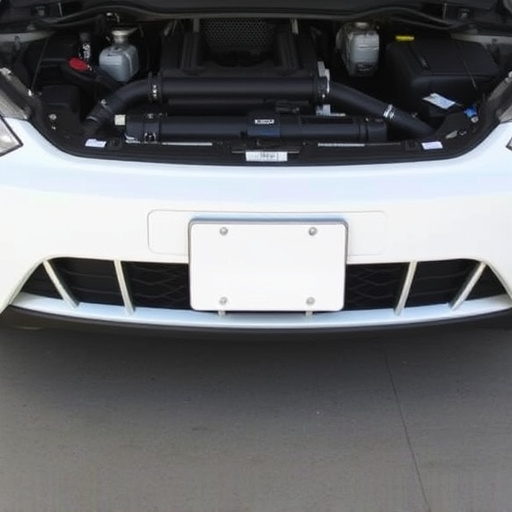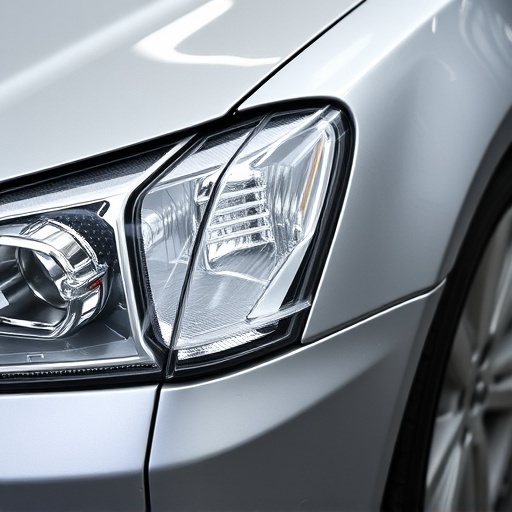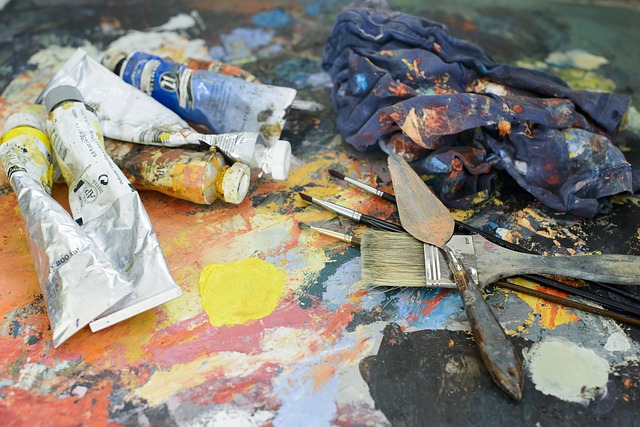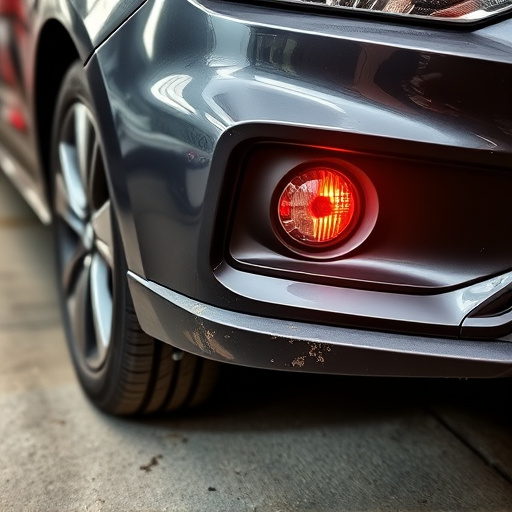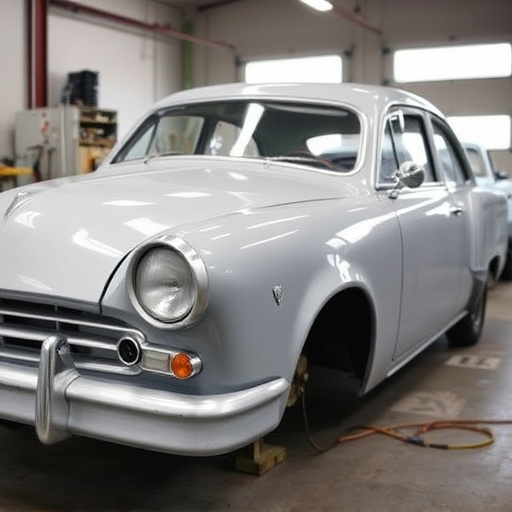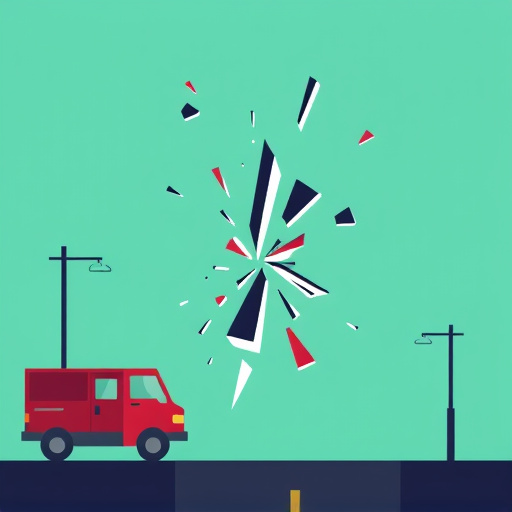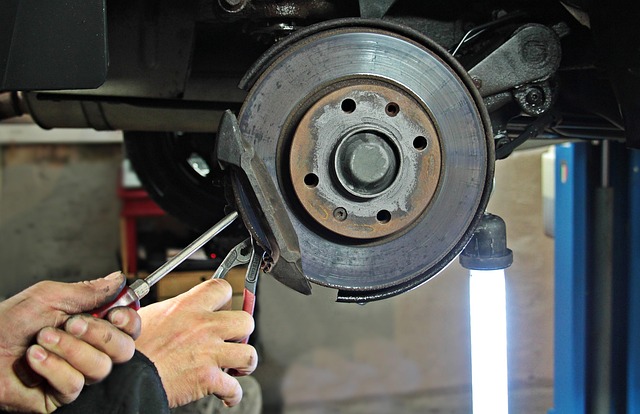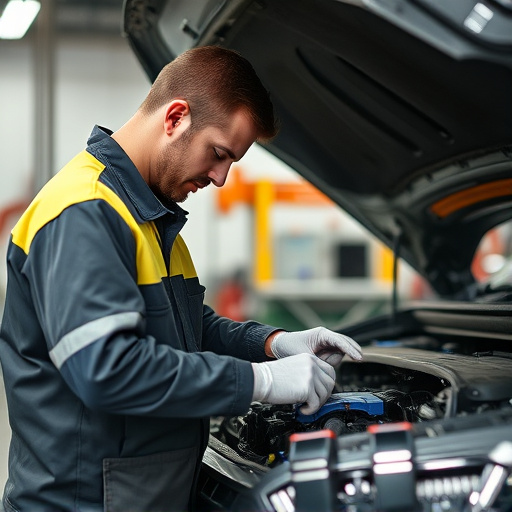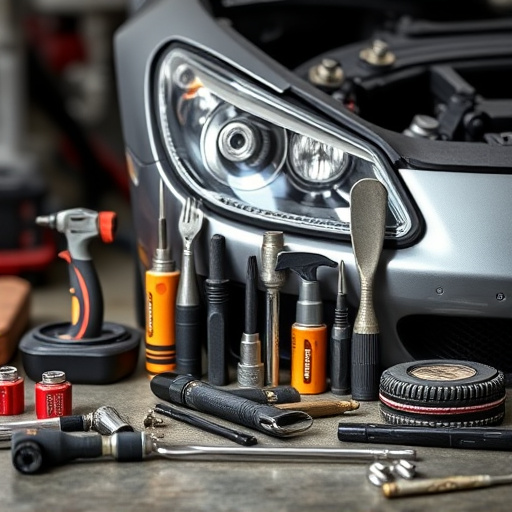Plastic bumper covers, though durable, are susceptible to cracks from impact damage, UV exposure, and temperature fluctuations. Effective repair involves identifying crack types (linear, star-shaped, scattered) and using methods like adhesives, injection molding, or custom fabrication. The process begins with inspection, cleaning, and repairing minor cracks with specialized kits; more severe damage may require cutting and replacing sections. Repairs are finalized with clear coating or paint for aesthetic restoration. Professionals use precise tools and materials, ensuring intricate repairs that blend seamlessly with minimal crack visibility.
Plastic bumper covers, a common feature on modern vehicles, can develop cracks due to impact, weather exposure, or manufacturing defects. This article guides you through the process of repairing these cracked surfaces, offering a practical solution for both professionals and DIY enthusiasts. We’ll explore the various types of cracks, provide a step-by-step repair guide, and list common tools and materials required for effective plastic bumper cover repairs, ensuring your vehicle’s aesthetic appeal and safety.
- Understanding Plastic Bumper Cover Cracks: Causes and Types
- The Step-by-Step Process of Repairing Plastic Bumper Covers
- Common Tools and Materials Used for Plastic Bumper Cover Repairs
Understanding Plastic Bumper Cover Cracks: Causes and Types

Plastic bumper covers, while durable, are susceptible to cracks due to various factors. Understanding these causes is essential for effective plastic bumper cover repair. Common reasons include impact damage from auto collisions, minor bumps, or accidental knocks, which can lead to hairline fractures or larger breaks. Environmental conditions such as extreme temperature fluctuations and UV exposure from sunlight also contribute to cracking over time, causing the material to weaken and become brittle.
There are several types of cracks that may appear on bumper covers: long, linear cracks resulting from high-impact events; star-shaped or web-like patterns often seen in areas subjected to repeated stress; and shallow, scattered cracks caused by minor damage or aging. Proper identification of crack types is crucial for selecting the right repair method, whether it’s using specialized adhesives, injection molding, or custom fabrication, ultimately ensuring the restored bumper cover matches the vehicle’s original condition and enhances auto body services.
The Step-by-Step Process of Repairing Plastic Bumper Covers

The process of repairing a plastic bumper cover involves several meticulous steps to ensure a durable and aesthetically pleasing fix. It begins with thorough inspection; technicians carefully assess the extent of damage, identifying cracks, breaks, or dents. This initial evaluation is crucial for determining the appropriate repair method.
Next, they prepare the area by cleaning and degreasing the bumper to create a clean surface for work. For smaller cracks, a specialized plastic repair kit is used. This involves applying heat with a heat gun to soften the plastic, allowing it to be molded back into shape using a tool or putty knife. More severe damage may require cutting out the damaged section and substituting it with a new piece, meticulously matching the original design for seamless integration. Once repairs are complete, a clear coat or paint is often applied to match the bumper’s original finish, enhancing both appearance and protection against future damage. This meticulous process ensures that car body repair is not just functional but also restores the vehicle’s aesthetic appeal, much like a collision repair center would handle more complex damages, including tire services for overall vehicle wellness.
Common Tools and Materials Used for Plastic Bumper Cover Repairs

When it comes to fixing cracks in plastic bumper covers, technicians often rely on a toolkit tailored for precision and durability. Common tools include specialized knives for cutting away damaged material, sandpaper for smoothing edges, and a range of glues designed specifically for thermoplastic polymers used in car bumpers. For more intricate repairs, heat guns are utilized to soften the plastic, making it easier to reshape or fill gaps.
Materials for plastic bumper cover repairs are equally important. Besides the glue, technicians might use composite fills that match the bumper’s color and texture, ensuring a seamless blend. These fillers come in various forms, from putty-like compounds to pre-shaped pieces designed to fit specific crack patterns. Additionally, car dent repair experts often employ clear coats and base coats for paint repairs, offering both protection and invisibility once the crack is filled and smoothed out, much like a collision repair shop would for more extensive damage.
When cracks appear in your car’s plastic bumper cover, it’s important to address them promptly. By understanding the causes and types of these cracks, you can ensure effective repairs using the right tools and materials. Following a step-by-step process, technicians expertly mend these damages, restoring your vehicle’s aesthetic appeal and structural integrity. Efficient plastic bumper cover repair is key to maintaining your car’s overall health and value.
